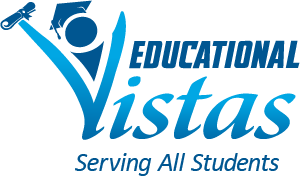Call NYS ELA and Math Tests What They ARE:
Not STANDARDIZED
For a test to be standardized, it must be so in every way. NYS ELA and math tests administered annually in grades 3-8 and not standardized. Rather, they are criterion-referenced or, better, standards-based. The need to correct this situation is important for parents and students from the cries of those who apparently know now what they are saying.
Here is the situation. First of all, NYS does less testing today than it has for years. To go further, NYS Education Commissioner MaryEllen Elia and Board of Regents stepped forward to initiate actions to make NYS testing a positive and fruitful experience. Four important things happened: 1) tests were shortened; 2) tests were untimed; 3) large portions of the tests were released to the public; and (4 Next Generation Learning Standards were developed for English language arts (ELA) and mathematics with educator and public involvement. The action of most significance was to not place time constraints on the tests. This was a problem with early testing, particularly with the writing portions of the ELA tests.
At a conference, I asked Commissioner Elia why she choose not to time the tests. She replied, “Because I wanted to know what our students could actually do.” When a State test becomes untimed, it no longer meets a critical criterion to be a standardized test. In many ways this action meets a basic human condition in which some perform faster than others which is also true of learning.
State tests are based on standards which also inform a school district curriculum. The new learning standards are respected and used by teachers and administrators in aligning their teaching, learning, and assessment practices. In fact, the NYS tests provide valuable models for testing student acquisition of the standards through the content being learned. In the early testing in 2013 and a few years that followed, teachers did not have access to the tests once they were administered. In articles I wrote during the period, I pushed hard to have the test items released so teachers and administrators could get closer to determine need for curricular adjustments and interventions when relating actual student scores to the items through analysis.
In our schools at this moment, NYS teachers are developing and refining curriculum to align with Next Generation Learning Standards and modeling their assessments with those employed in State testing. State testing as it now appears in NYS is invaluable. It informs learning in all classrooms, helps direct resource support to those that need it, lends itself to analysis for deeper understanding of
individual student needs, and provides students with a testing experience which will follow beyond school.
These standard-based tests work much like a program test in that the skills and knowledge tested is that which is being taught. I see the annual testing as the basis for a performance arc. For example, the performance arc for ELA begins in grade 3 runs all the way to grade 11 where students complete a Comprehensive English Regents Exam which is tied to graduation. There is a similarity when examining the grade 3 ELA test to items in the English Regents Exam. In both cases the critical tasks require students to read documents, analyze them, and respond to prompts to demonstrate a level of understanding. Each year parents may see where their student is on the arc in terms of growth, leading to the comprehensive exam. NYS is recognized and admired for its long history (over a 150 years) of using Regents exams as the basis for testing course, content knowledge.
While education is a State responsibility, the federal government does have a role to play, particularly in aiding specific services for students. And, its financial contribution is tied to State testing results with a caveat that there be a 95% participation rate of students in the testing results. This requirement makes sense because the exclusion of a significant percent of student may undermine a test’s purpose and usefulness.
Hopefully, it will become clear to all that NYS has taken steps to move its testing program in a most positive manner in which all participants have something to gain.
 Dr. Bruce H. Crowder is a senior researcher for Educational Vistas, Inc. His work is primarily focused on creating pathways for deeper learning for all students through student performance and a dynamic curriculum replete with strategic teaching. Dr. Crowder may be reached at bcrowder@edvistas.com
Dr. Bruce H. Crowder is a senior researcher for Educational Vistas, Inc. His work is primarily focused on creating pathways for deeper learning for all students through student performance and a dynamic curriculum replete with strategic teaching. Dr. Crowder may be reached at bcrowder@edvistas.com


